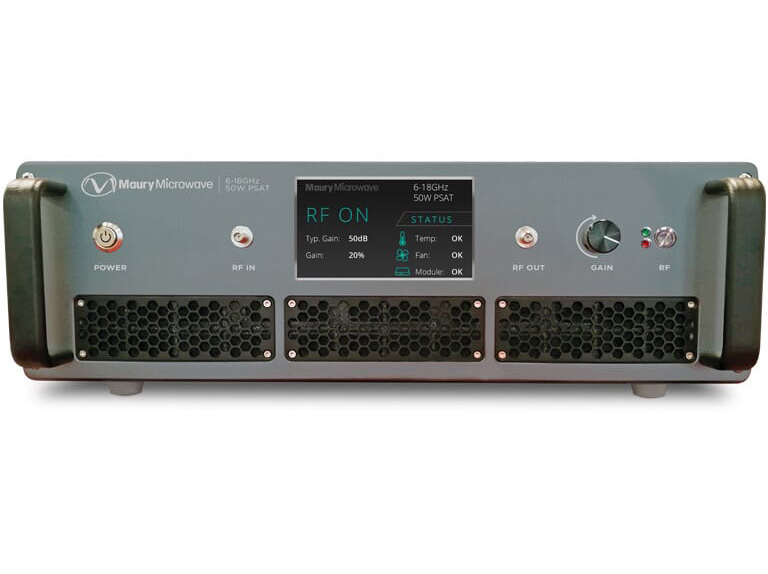Amplifiers that enhance your test & measurement lab benches
Not all amplifiers are created equal, so how can you be certain that an amplifier will work for your needs? You deserve to be confident that the amplifiers used with your test-and-measurement lab benches will meet the requirements of your specific applications, are reliable, and are equally well-supported pre-and post-sale. When it comes to application expertise, reliability and support, there is no company that does it better than Maury Microwave.
We are uniquely positioned to combine our measurement and load pull expertise with modern solid-state power amplifier design practices to deliver best-in-class instrument amplifiers. Our T&M amplifiers satisfy a wide range of application-specific requirements including simultaneous high-power, wide bandwidth, low harmonic power and high linearity.

Related Resources
01
How Do You Characterize DUTs from 67 to 98 GHz Accurately? Start with the Right GaN T&M Amplifier
This blog explores the advantages of GaN amplifiers in various industries and how T&M power amplifiers enable precise characterization of high-power DUTs, highlighting custom Maury Microwave T&M driver amplifier solutions.
Latest News & Blogs
How Do You Measure Phase Noise at D-Band Frequencies?
As next-gen communications, radar, and sensing technologies push into D-Band, designers need advanced phase noise analysis solutions to maintain expected performance. This blog reviews common D-Band applications and how to…
What Are High-Power Microwaves and Why Do They Matter on the Battlefield?
High power microwave (HPM) technology is an effective tool to counter hostile electronic systems quickly and precisely. In this post, we’ll explore what HPM systems are, how they work, and…
How Can Engineers Validate the Power and Precision of High-Power Microwaves?
When an electronic threat is identified, high-power microwave (HPM) pulses can be used to shut down or destroy a target’s most essential systems. Achieving this level of performance requires advanced…
How Does Connector Care and Cable Phase Stability Impact Test Results?
RF and microwave connectors are essential in test setups, but simple oversights, such as using incompatible connector interfaces or careless storage, can degrade performance and cause costly equipment damage. In…
How Can Color-coded Connectors Prevent Costly Mistakes in the Lab?
RF and microwave test labs are dynamic environments with connectors everywhere. They’re found on cable assemblies, precision adapters, and attenuators, requiring the right torque wrenches to secure connections. With many…
What Is Pulse Compression Radar and What’s Needed to Test It?
From surveillance operations to mission-critical defense systems, pulsed radar is central to various applications requiring precise target information, such as range and velocity. In this blog, we’ll explore how pulsed…
How Do You Power Reliable EMC Immunity Testing?
Electromagnetic compatibility (EMC) testing ensures that electronic devices operate as intended in dense wireless environments without causing or being significantly affected by interference. EMC standards are pivotal across various industries,…
Why Does Pulse Shape Matter for Radar (and How to Accurately Characterize It)?
From air traffic control operations to weather monitoring to mission-critical military applications, pulsed and pulse compression (CHIRP) radar plays a vital role in target detection and tracking applications. In this…


